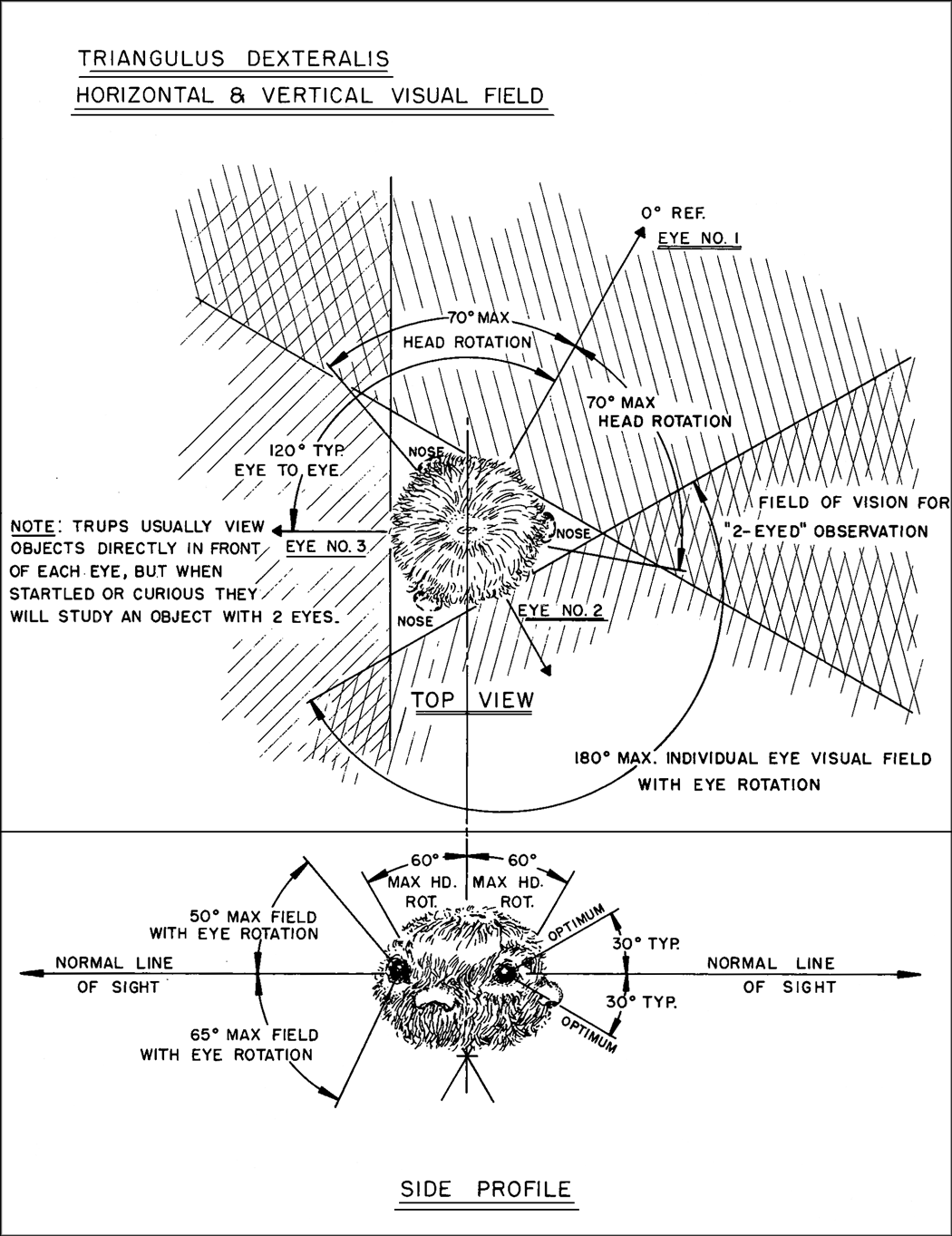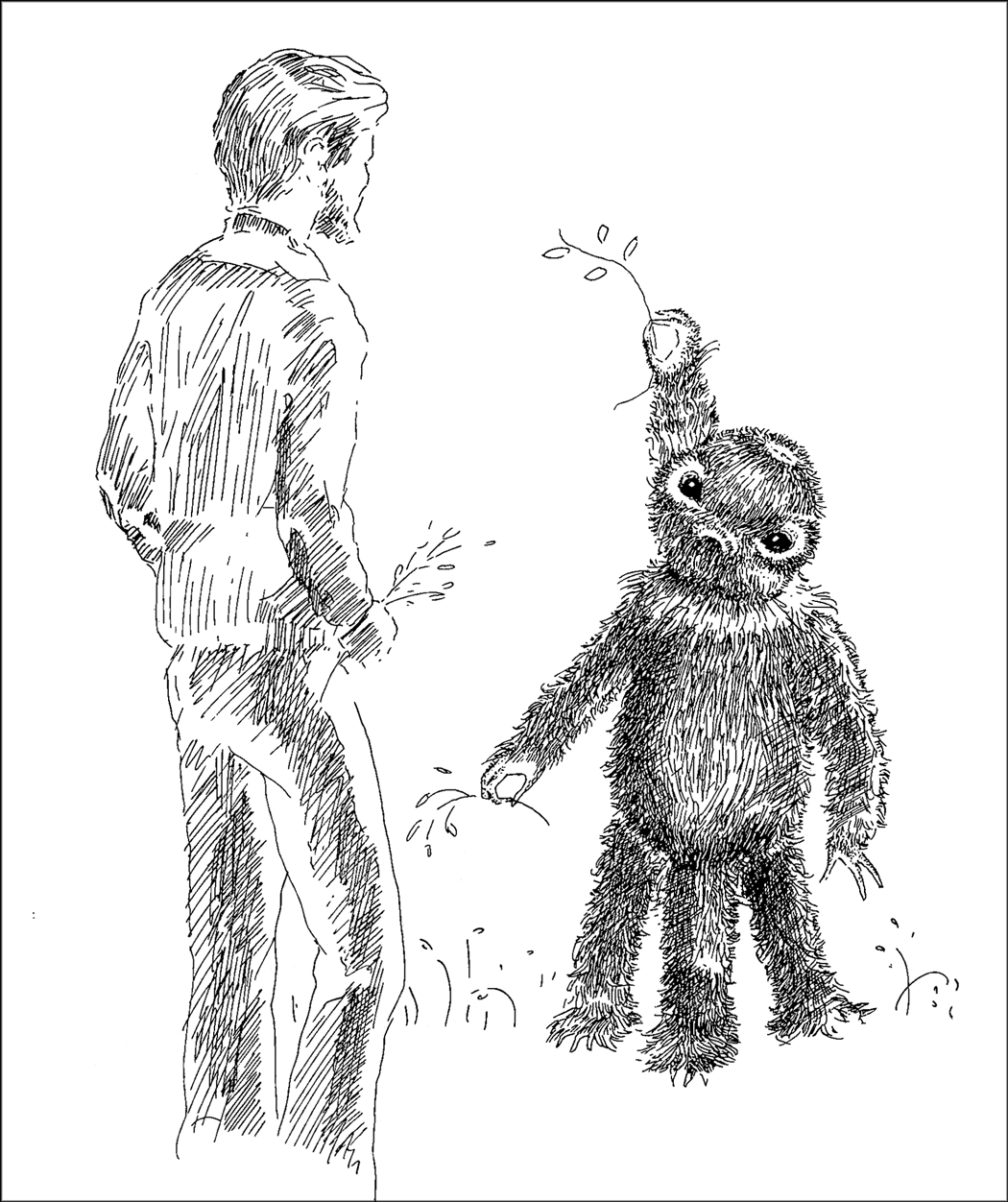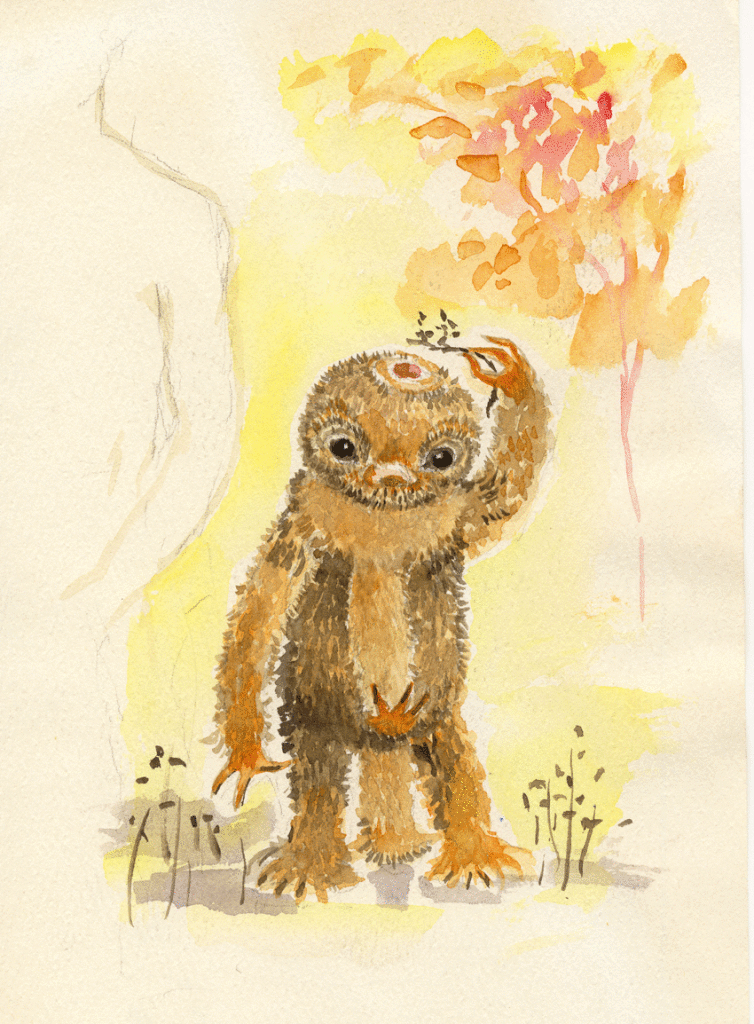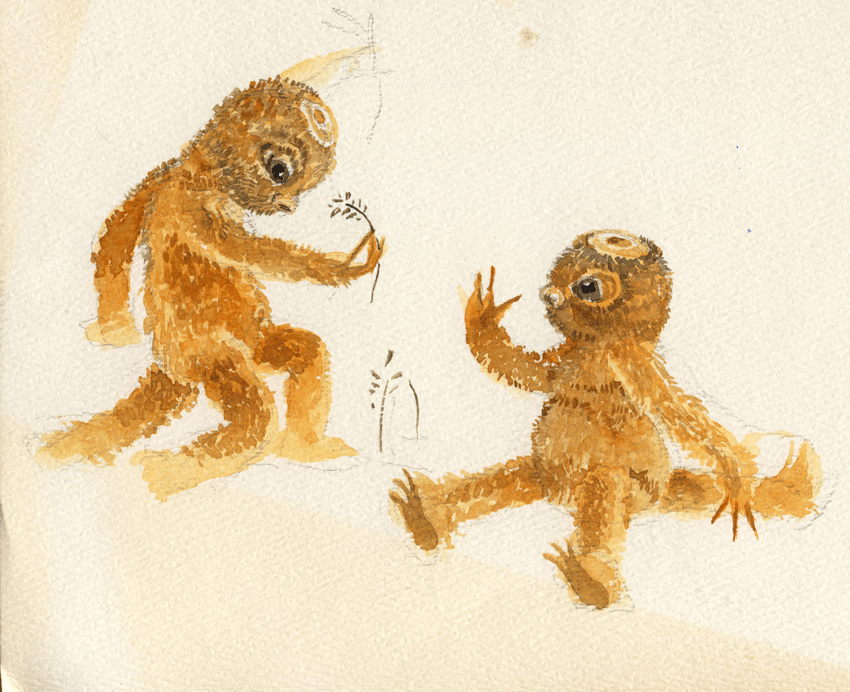LIFE FORMS
Vegetation
Yom’s unusual vegetation paints a landscape of perennial autumn colors. Green chlorophyll colors Earth’s land plants, while on Yom, the chemical that turns light and air into plant material is red, orange, or yellow. Yom’s plants exhibit very advanced structures that resemble the grasses, bushes, trees, and ferns of Earth. All but tropical varieties are deciduous, losing their foliage and becoming dormant in the winter months. Colors change little in the autumn; leaves just turn dark brown and fall from the plants.
Yom’s most advanced plant life rivals Earth’s angiosperms in the sophistication of its design. Seeds develop inside an ovary, protected from damage. Unfortunately, none of Yom’s ovarian plants display the beautiful flowers found on Earth. Nothing resembling the complex symbiosis between flowering plants and pollen-carrying insects has developed in Yom’s ecology.
Despite the fact that Yom’s plants bear some fruit that Humans can eat, early pioneers brought native crops with them from Earth. These crops remain the staple food source of Yom’s colonists today, though intensive cultivation of native varieties has begun. Earth’s plants thrive in Yom’s environment, for few native weeds can crowd out the more efficient green chlorophyll plants.
Animals
Yom hosts the most unusual animal life among the Human colonies. On all other planets, advanced animal forms generally have one plane of symmetry, regardless of their phylum. In other words, one half of the creature approximately mirrors the other half. On Yom, however, all advanced species have three planes of symmetry, each at 120° angles to each other. These planes divide each animal into three sections that resemble each other and meet along a central axis. Land creatures on Yom generally have three or six limbs. Six-limbed varieties may have three specialized limbs that aid in eating, or they may use all six for locomotion, resembling self-propelled, two-wheeled chariots.
Marine species, both warm- and cold-blooded, also possess the triplanar symmetry. Some of these animals swim by pushing water back with their fins in fashion similar to Earth’s fish and cetaceans; others swim with a corkscrew motion, rotating constantly and looking ahead with one unblinking eye. Symmetry may not be preserved in the internal organs of Yom’s animals, just as the internal organs of Earth’s animals lack truly symmetrical design.
Most-scientists believe the triplanar symmetry to be, in some sense, inferior to the planar symmetry common to most other planets. Many speculate that if large numbers of planar species from another planet were introduced they would supersede the native forms. A minority of biologists dissent, arguing that the triplanar form often offers advantages, and that it occurs so rarely simply because it requires a statistically less probable evolution. The minority viewpoint may be correct for many of Yom’s triplanar animals possess extremely well-developed instincts and rudimentary intelligence. In fact, one species, triangulus dexteralis, commonly referred to as the “trup,” may be the most fascinating lovable animal found on any Human world. Its unique capabilities have made it extremely important to the economic and social development of the Yom colony.
Figure 3.18 – Triangulus Dexteralis Field of Vision
Figure 3.19.001 – Triangulus Dexteralis (TRUP) Characteristics and Population Estimates
Height – 130 – 150 cm
Weight – 40 – 80 kg
(Ranges of 90% of population)
Population Estimate 20 million
The trup, shown in figures 3.18 and 3.19.001 above, is a warm-blooded animal which stands between 110 and 150 centimeters in height and measures between 30 and 45 centimeters in diameter. It has three eyes, three arms, and three legs. On each of its three arms, the trup carries a three-fingered hand. One finger, set at right angles to the other two, serves as a thumb. Trups breathe air through three “noses” located in the sides of their heads. Each nose contains a single nostril and the trup’s hearing organs. The trup’s mouth opens on top of its head, with its throat passing through the center of a toroidal-shaped brain. A light coating of fur, ranging from reddish-brown to pale gold in color, covers the trup’s body.
Figure 3.19.002 – Triangulus Dexteralis (TRUP) Eating – Original watercolor by artist Rose McGillicuddy
Like most warm-blooded species on Yom, trups bear their young alive. Unlike Earth’s mammal they do not nurse their young from mammary glands. Males and females appear quite similar, though females outnumber males by two to one. Though biologists classify the trup as a single species, several races, or “breeds,” have been observed. These vary somewhat in size, shade and shape from one geographic area to the next, similar to the variation among Human races in Earth’s early history and prehistory.
Figure 3.19.003 – Triangulus Dexteralis (TRUP) Sharing Food –
Original watercolor by artist Rose McGillicuddy
Trups live in small tribal units consisting of fifteen to thirty individuals. When a unit grows larger than this, it usually divides into two smaller groups with each going its separate way. Trups employ a basic language of approximately 500 verbal words and signs. The language contains no abstract concepts and very few adjectives or adverbs. Trups fashion simple tools, such as stone axes, clubs, and shovels. They build small, lean-to shelters to store food and protect themselves-from the snow. Trups do not use fire, have no written language, and do not paint pictures, make designs, or create art of any kind.
Though omnivorous, the bulk of the trup’s diet is vegetarian. Their staple food consists of roots of certain plants dug from the ground with simple shovels. They often store roots in lean-to shelters during the winter months when the ground is frozen. Trups eat some local fruits and seeds when they can and will occasionally eat inquads, small creatures that resemble four-legged versions of Earth’s insects. Trups generally eat non-flying inquads and will sit for hours picking them one at a time from the ground. If given cooked or processed meat, trups will eat it, but they have never been observed to eat raw flesh of other advanced animal life.
Before Humans came, trups dominated their planet. Somewhere between 20 and 40 million trups wander Yom’s surface, living a foraging lifestyle. Few natural enemies threaten them. Though gentle and passive by nature, the trup’s long arms can hurl stones with such impressive force that even the most ferocious of Yom’s large carnivores refrain from attacking a group of them.
A curious phenomenon besets most of Yom’s animal life. During one hour of each day, all native species become extremely quiet and appear to hide. No sounds can be heard; no cries or movements disturb the silence. The phenomenon has been compared to the silence that proceeds a tornado on Earth, yet it has no apparent physical cause. Silent hour often occurs in late afternoon, but has no straightforward relationship to sunset. Time at which the hour occurs appears to be random from day to day, but always occurs during daylight hours. Length of the “hour” varies between 53 and 71 minutes. Domestic animals brought from Earth seem oblivious to it and continue to act normally. Trups also ignore the silent hour, carrying on their simple tasks as if it did not occur. Silent hour has been observed in all explored areas of the planet.




